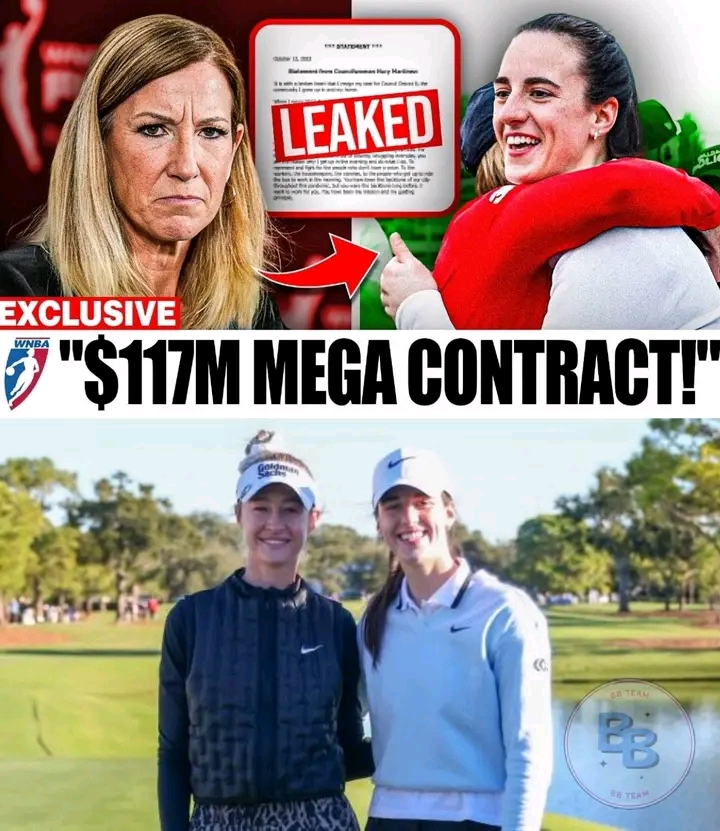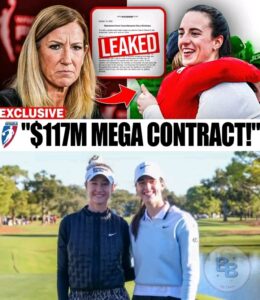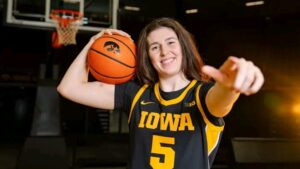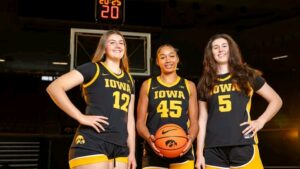
LPGA Takes Advantage of the Moment, WNBA Lags Behind: Caitlin Clark’s golf cameo shows a split in women’s sports It started out as a fun idea to invite the biggest name in women’s basketball to a celebrity Pro-Am, but it turned out to be one of the most revealing moments in women’s sports this year. Caitlin Clark was supposed to have a good time at the LPGA event. It was supposed to be fun, playful, and maybe even a little experimental. Instead, it tore apart the growing gap between two leagues that were dealing with the growing power of female sports fans in very different ways.
The mood changed as soon as Clark’s name came over the speakers. This wasn’t how to act on the golf course. The applause turned into a real roar, and all of a sudden, thousands of fans were lining the fairways. They looked more like they were going to a March Madness game than a Saturday morning tee time. A lot of them had never seen an LPGA round before. But there they were, wearing Clark jerseys, waving signs, and buzzing with excitement. It wasn’t just the number of people there; it was the energy, a surge of electricity that doesn’t happen very often in the calm world of professional golf.
The LPGA knew right away. Clark’s arrival wasn’t just a new thing for the league; it was a golden opportunity. They put out the red carpet. They made her feel like she belonged with them. Their stars, like Nelly Korda and Lexi Thompson, didn’t mind that Clark got a lot of attention. Instead, they praised her, hugged her, and openly celebrated what her presence meant for their sport. They understood something simple but important: when one woman wins, everyone gets more attention. But Clark’s home league was very quiet, even though the LPGA was getting a lot of attention.
Reports state that the WNBA’s internal response was much less joyous behind closed doors. There were rumors that veterans who had spent years laying the league’s foundation had been overshadowed by Clark’s explosive popularity, which had turned into a “complication.” This anxiety began to show in the public eye through subtle jabs on social media, side remarks in interviews, and instances where the league appeared unsure of how to deal with its best player.
The hesitation seemed perplexing to fans outside the bubble. Why wouldn’t the WNBA want to take advantage of Clark’s popularity? She has consistently acknowledged the pioneers who came before her and has never pretended to be larger than the league. However, the WNBA frequently appeared to be avoiding the situation rather than capitalizing on it.
The opposing responses from the WNBA and LPGA reveal more about the condition of women’s sports. One league saw Clark’s transition as an opportunity to work together, welcome new players, and demonstrate to the world that women’s golf is accessible, exciting, and youthful. The other appeared to be trapped in a mindset of scarcity, worried that honoring one star would diminish others.
But growth doesn’t operate that way. The LPGA recognized that fans broaden their interests rather than give up on a sport when a new player enters it. They saw Clark’s genuineness and charm as a gateway for individuals who might not have thought to watch women’s golf. They capitalized on a cultural wave with just one invitation.
In contrast, the WNBA might have lost out on a chance to celebrate a shared victory for women’s sports as a whole. What if the league had welcomed Clark’s Pro-Am appearance, celebrated it, or used it as a rallying cry for cross-sport? They could have emphasized their own golfers. The publicity could have been linked to the next season. Instead of letting the buzz develop into a plot about insecurity and tension, they could have turned it into momentum. Rather, the optics became precisely that: basketball appeared unsure of how to deal with Clark’s celebrity, while golf welcomed her with open arms.
This goes beyond a single athlete. It concerns how leagues present themselves in a time when fans are more interested than ever in female athletes’ unity, connection, and cooperation. The public has had enough of gatekeeping. Instead of silently vying for attention, they want to see leagues supporting one another. There is no denying Clark’s influence. Just by showing up, she alters the mood. She draws admirers who arrive early, stay late, and exude enthusiasm that uplifts everyone in her vicinity. The LPGA recognized that right away. The WNBA is still debating whether to follow the trend or not.
The lesson from this experience seems clear: hesitation only results in regret, while cooperation fosters growth. The LPGA welcomed the future. The WNBA still has time to follow suit, but time is of the essence, and supporters particularly young girls watching from the sidelines are hoping the league decides to unite before the deadline expires.





